Busch 10x20x60 (C. Baker London ?)
| Das hier gezeigte schwarz lackierte Messingfernrohr hat ein 60mm Objektiv und zwei Okulare mit 10x und 20x Vergrößerung an einem Okularrevolver. Der Rand des Okularrevolvers ist mit "E. Busch Rathenow 1915" graviert; die Schriftform ist jedoch etwas ungebräuchlich für E. Busch, so dass hier evtl. auch fälschende spätere Gravur oder Umbeschriftung stattfand. Dies erhärtet sich durch in einer Auktion gefundenen Exemplar ohne Lackierung, welches als "C. Baker 1940" Telescope" (19x 20x) deklariert wird (s. letztes Foto). Unter der Beschriftung befindet sich eine Teilenummer, wie sie auch innen an den anderen Bauteilen markiert ist. Die Okulare stoppen in der Gebrauchsposition anhand eines einfachen Systems mit einer Schraube im Gehäuse und innen am Revolver, die sich an einer Stelle das Weiterdrehen blockieren. Die blanken Messing-Okulare haben einen Dioptrieneinstellung von + bis - 5. Vermutlich waren einst beide Okulare mit einer Weichgummi- oder Leder-Augenmuschel ausgestattet. Es gibt eine Strichplatte mit einem vertikalem Visierstrich und einer Beleuchtungseinrichtung, dessen Abdeckung sich einmal mit einer Kette an einer Gehäuseöse sichern ließ. Der Einblick ist ist im 45° Winkel, so dass sich Luftbeobachtungen leichter ausführen ließen. Das Fernrohr hat an beiden Seiten Montagezapfen, mittels derer es sich auf einer Gabel vertikal schwenken ließ. Der gerade Objektivendtubus bildet eine Sonnenblende und hat eine Schutzkappe mit Lochblende. | The black painted brass telescope depicted here has a 60mm objektive lens and two eypieces with 10x and 20x power on a eyepeice turret. The rim of the turret is marked with "E. Busch Rathenow 1915" in script writing. This kind of script is quite unusual for E. Busch so that one may assume a later fake engraving or new inscirption. This suspicion is substantiated by a polished model once offered by an auction house which says it is a 2C. Baker 1940 telescope" (19x 20x). (see last pic.). Below the isncription is a part number as it can be found on som other parts of this scope. The eyepieces stop in viewing position by means of a simple system with screws inside the housing and inside the turret blocking rotation in one position. The polished brass eyepieces have a dioptre adjustment ranging from plus to minus five. Assumingly, both eyepieces once came with a soft rubber or leather eyecup. There is a reticle with a vertical line and n illumination unit. The cap of the unit was originally secured with a little chain to a lug on the housing. The viewing position is angled by 45° so that air surveillance was more comfortable to do. The monocular has two trunnions which when attached on a fork mount allowed vertical movements. The straight objective tube forms a ray-shade, asnd comes with a protection cap with a small light stop. |
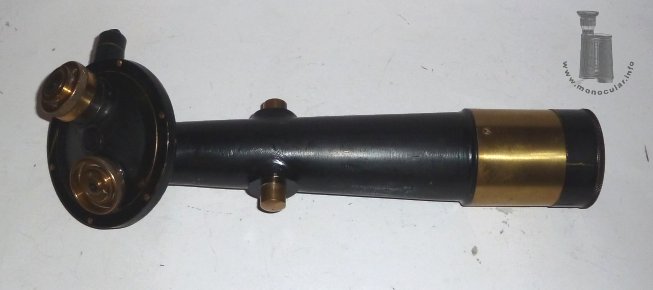

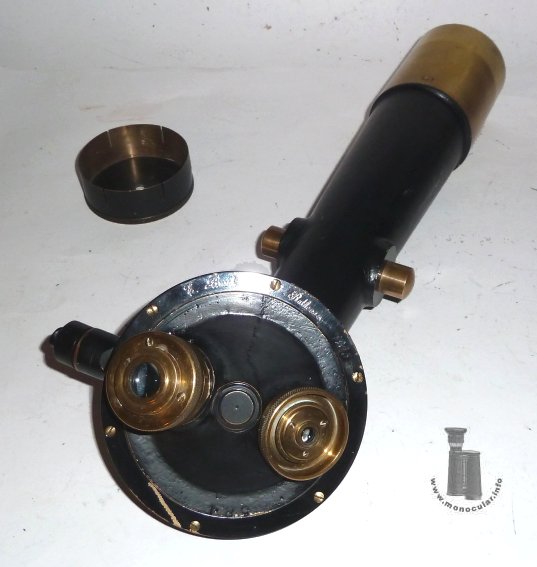
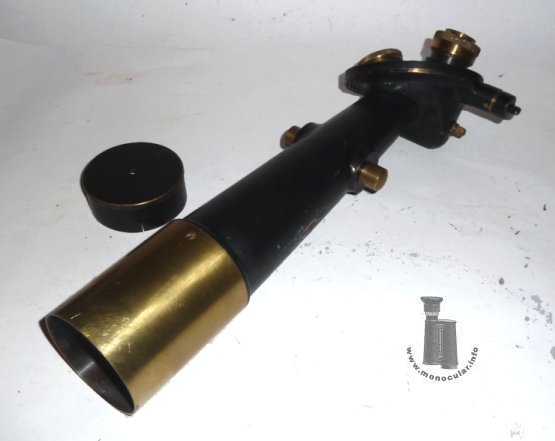
| Das Fernrohr wiegt 4560g. Es ist 42cm lang; davon macht der gerade Objektivtubus 95mm und der konische Haupttubus 225m aus. Der Haupttubus erweitert sich von 46mm auf 70mm, der Objektivtubus ist 75mm im Durchmesser. Der Okularrevolver ist 126mm, die Okulare am geriffelten Rand 46mm im Durchmesser. Die seitlichen Haltezapfen sind 19mm im Durchmesser. | The telescope weighs 4560g. It is 42cm long; the straight objective tube is 95mm and the conical tube 225m long. The main tube increases from 46mm to 70mm in diameter, the objective tube is 75mm in diameter. The eyepiece turret ist 126mm, the eyepieces themselves (knurled part) are 46mm in diameter. The trunnions are 19mm in diameter. |
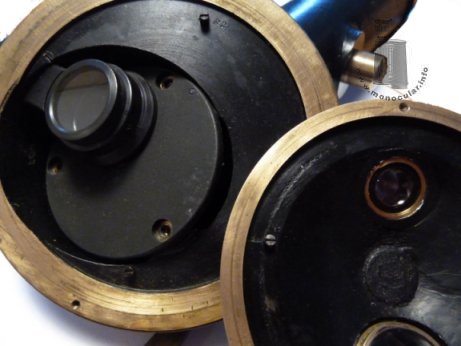
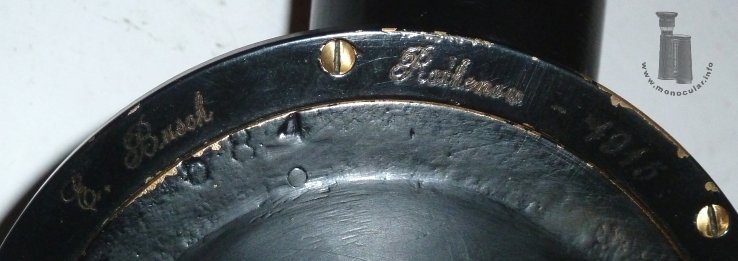

Fotos: Zeun; 7 auction

